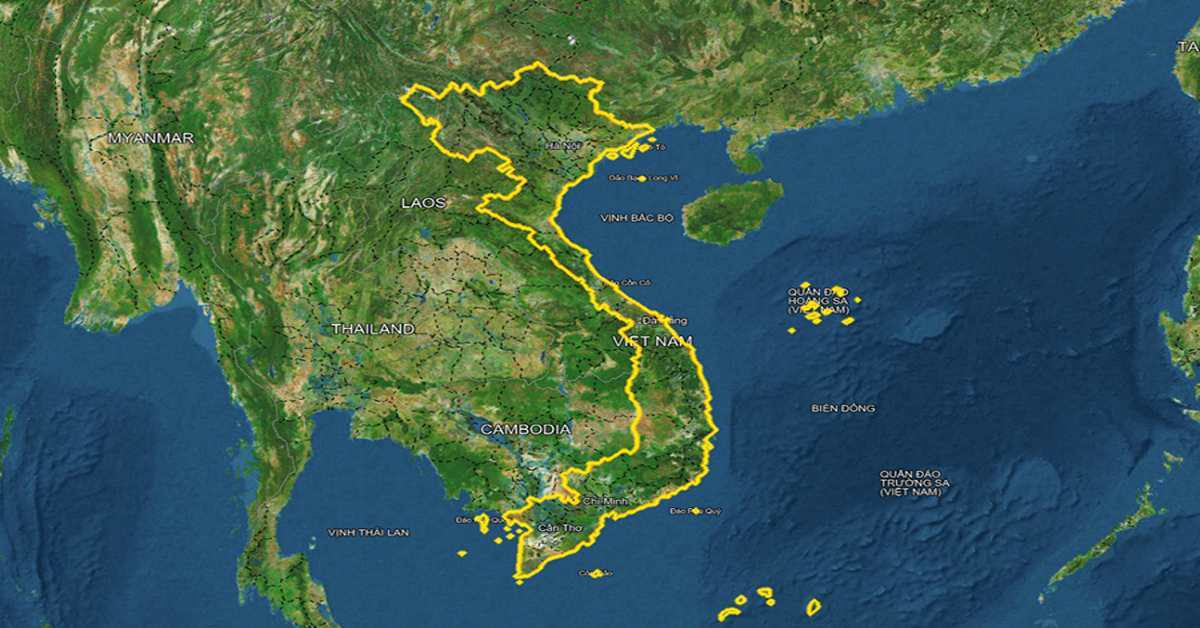
All about the merger from 63 to 34 provinces Vietnam
Vietnam has recently undertaken a significant administrative reform, reducing its number of provincial-level administrative units from 63 to 34 provinces Vietnam. This “merger” is a major overhaul of the country’s governance structure, aimed at streamlining the administrative apparatus and enhancing efficiency.

All about merger from 63 to 34 provinces Vietnam
1. The Change from 63 to 34 provinces Vietnam:
- From 63 to 34 provinces Vietnam: The National Assembly passed a resolution on June 12, 2025, to consolidate Vietnam’s provincial-level administrative system. This reduced the total number of provincial-level units (provinces and centrally-run cities) from 63 to 34 provinces Vietnam.
- Composition of New Units: The new structure comprises 28 provinces and 6 centrally-run cities.
- Implementation Date: The changes officially began taking effect on July 1, 2025, with local administrations formed after the rearrangement starting operations from this date.
2. Key Objectives and Rationale of the merger from 63 to 34 provinces Vietnam:
- Streamlining Governance: The primary goal is to create a leaner, more compact, stronger, and more efficient administrative system. Vietnam previously operated under a four-tier system (central, provincial, district, commune), while most countries use a three-tier system. This reform aims to transition to a two-tier system at the local level (provincial/municipal and commune/ward).
- Reducing Overlap and Bureaucracy: The previous system often led to duplicated responsibilities between different administrative levels (central, provincial, district, commune), causing inefficiencies and waste of resources. The mergers aim to eliminate these overlaps.
- Improving Public Services: By consolidating resources and responsibilities, the government hopes to deliver better, more integrated public services to citizens.
- Enhancing Economic Development: Larger, more unified administrative units are expected to facilitate better infrastructure and transportation planning, attract more international investment, and support long-term economic growth and tourism development by creating larger, more cohesive economic zones.
- Cost Savings: Reducing the number of administrative units and streamlining the apparatus is also expected to lead to significant cost savings and a reduction in government jobs (estimated to cut around 250,000 positions).
- Decentralization with Efficiency: While the central government will focus on national strategy, foreign affairs, defense, and security, provinces and cities will take greater responsibility for localized implementation. The commune level is emphasized as the “foundation” where Party and State policies are truly implemented, with increased decision-making power in socio-economic, health, and education matters.
3. Specific Changes and Notable Mergers from 63 to 34 provinces Vietnam:

- 11 Unchanged Units: Hanoi, Hue, Lai Chau, Dien Bien, Son La, Cao Bang, Lang Son, Quang Ninh, Thanh Hoa, Nghe An, and Ha Tinh are among the provincial-level units that will remain unchanged.
- Extensive Mergers: The remaining 52 localities have been subject to restructuring, including the four centrally-run cities of Ho Chi Minh City, Hai Phong, Da Nang, and Can Tho.
- Examples of Mergers:
- Tuyên Quang (new): Merged from Hà Giang and the former Tuyên Quang.
- Lào Cai (new): Created from Yên Bái and the former Lào Cai.
- Thái Nguyên (new): Results from the merger of Bắc Kạn and the former Thái Nguyên.
- Phú Thọ (new): Combines Vĩnh Phúc, Hòa Bình, and the former Phú Thọ.
- Bắc Ninh (new): Formed by uniting Bắc Giang and the former Bắc Ninh.
- Hải Phòng City (new): Expanded to comprise Hải Dương and the former Hải Phòng.
- Ho Chi Minh City (expanded): Merged with Binh Duong and Ba Ria-Vung Tau, becoming Vietnam’s most populous urban center.
- Da Nang City (expanded): Incorporates Quang Nam province, making it the largest centrally managed city by area.
- Lâm Đồng Province (new): Formed by merging Lâm Đồng, Bình Thuận, and Đắk Nông, becoming the largest province by land area.
4. Impact and Challenges:
- Constitutional Amendments: The reform requires significant changes, including amendments to the 2013 Constitution, which currently defines a three-tier system.
- Legal Document Revisions: Approximately 19,000 legal documents may require revision to align with the new administrative structure.
- Personnel and Asset Restructuring: There will be a complex process of restructuring personnel and assets at the district level, which will cease operations.
- Cultural and Historical Identity: There are ongoing discussions and considerations regarding the naming of merged provinces and ensuring that historical and cultural identities are respected.
- Impact on Businesses and Tourism: While the changes are largely administrative, businesses will need to recalibrate relationships with newly formed or expanded local authorities. For tourists, major changes to itineraries or destinations are not expected, though maps and official signage may reflect the new provincial names.
See also: Top 5 Best Dental Care in Vietnam
Tips and notes for foreigners in Vietnam about the merger from 63 to 34 provinces Vietnam

Vietnam’s administrative merger is a significant shift, impacting various aspects of life and business. For foreigners, whether you’re a tourist, expat, or investor, here are some key notes to keep in mind:
For Tourists:
Maps and Navigation:
- New Names: Be aware that official maps, online guides, and GPS systems will gradually reflect the new provincial names. While popular tourist destinations like Da Lat or Ha Giang still exist, they now fall under new, larger provincial entities. For example, Da Lat is still Da Lat, but it’s now the administrative center of the expanded Lâm Đồng Province (which merged with Đắk Nông and Bình Thuận).
- Local Identity Remains: The cultural identity and local names of famous sites will remain. You’ll still visit “Hoi An” or “Sapa,” even if the provincial administrative name has changed around them.
- Check Before You Go: For less common destinations, it’s a good idea to double-check the current provincial name if you’re planning independent travel, just to avoid confusion with local transportation or booking services.
Travel Planning:
- Improved Connectivity (Long-term): The goal of the merger is to improve infrastructure and connectivity. In the long term, this could mean better roads, more integrated transportation networks, and smoother travel between regions.
- No Immediate Drastic Changes: For most tourist itineraries, you won’t experience immediate drastic changes. The focus is on administrative streamlining, not disrupting existing tourism routes.
- New Tourism Products: The mergers aim to create larger, more diverse tourism regions. This might lead to new, integrated tour routes that combine attractions from formerly separate provinces, offering richer experiences.
Services:
- Hotels/Tour Operators: Major hotels and tour operators should be aware of the changes and can guide you.
- Local Businesses: Smaller, local businesses might still refer to old provincial names for a while, but they will adapt.
For Expats & Foreign Residents:
Legal Documentation – Crucial!
This is the most significant impact. Your existing documents are tied to specific provinces and employers.
- Work Permits (Work Visa): If your company’s registered address or your residence now falls under a different provincial jurisdiction, you may need to update your work permit. Contact the Department of Labor, Invalids, and Social Affairs (DOLISA) or, now, increasingly the Ministry of Home Affairs (MHA) as oversight for foreign workers has transferred there. Delays are possible during this transition period.
- Temporary Residence Cards (TRCs): Similar to work permits, if your registered address changes due to a merger, you might need to update your TRC at the Immigration Office.
- Business Registration Certificates (ERCs) / Investment Registration Certificates (IRCs): For foreign-owned businesses (FDI enterprises), while there’s no immediate mandatory update solely due to the merger, it’s highly recommended to align your registration details with the new provincial structure when you make other business changes or proactively. This prevents discrepancies between your ERC/IRC and the tax database, which has likely been auto-updated.
- Property & Land Use Rights: If you own property or have land lease rights, your land title documents will need to reflect the name of the newly merged province. Consult with the Department of Natural Resources and Environment for guidance.
- Bank Accounts & Personal Tax Records: These may also require modifications to align with the new administrative structure.
Government Services:
- New Contact Points: District-level administration has largely been eliminated. Many procedures that used to be handled at the district level will now be managed at the commune/ward level or directly at the provincial level. This is intended to be more efficient.
- Potential for Initial Delays: While the aim is efficiency, any large-scale administrative overhaul can lead to temporary confusion and delays as new systems are implemented and officials adapt. Be patient and prepared for potential learning curves.
- Information Accessibility: The government aims for greater transparency and information accessibility. Stay updated through official channels or trusted legal/consulting firms.
Local Relationships:
- Re-establish if Needed: If your business or residence is in a merged area, your points of contact within local government offices (e.g., provincial People’s Committee, departments) might change. You may need to re-establish relationships.
- Consistency: The goal is to create more unified procedures and policies, which should lead to greater consistency in licensing and regulations across the larger provincial areas in the long run.
For Foreign Investors & Businesses:
- Streamlined Processes: The merger aims to reduce bureaucracy and make business easier with fewer administrative layers (eliminating the district level). This could mean faster setup and quicker processing of permits and licenses at the commune or province level.
- Larger Economic Zones: The creation of larger, unified regions is intended to attract more FDI by combining resources, improving infrastructure planning, and offering larger talent pools. For example, the expanded Ho Chi Minh City, now including Binh Duong and Ba Ria-Vung Tau, forms a massive economic and labor market.
- Investment Opportunities: New “mega-provinces” are expected to become strong investment hubs. Look out for strategic infrastructure investments (roads, ports, airports) that will enhance connectivity and open up new areas for development.
- Regulatory Consistency: While there might be short-term discomfort as regulations are harmonized across merged areas, the long-term goal is a more transparent and efficient regulatory framework.
- Due Diligence: When planning new investments or expansions, thoroughly research the new administrative boundaries and the specific local regulations of the merged provinces.
- Consult Experts: It’s highly advisable to work with experienced local legal and business consultants. They can help you navigate the updated administrative landscape, ensure compliance, and identify new opportunities.
